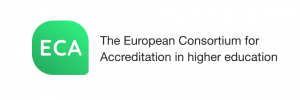New article by Lucien Bollaert: Quality Assurance in Europe (2005–2015). From Internal and Institutional to External and International.
 This new article highlights the developments in external quality assurance requirements between the launch of the European Standards and Guidelines in Quality Assurance (ESG in 2005 and the forth- coming Ministerial Bologna Conference in Yerevan (Armenia) in 2015. In mid-way, i.e. at the Vi- enna Bologna meeting in 2010, the EHEA has been officially said to be accomplished by the minis- ters, at least as far as structures and legislations are concerned. Yet it has become clear that there are still a lot of challenges, both in politics and within the Higher Education Institutions (HEIs), and this also concerns quality assurance matters (QA). These challenges seem to be accelerated by the economic crisis, because governments want more proofs to account for the money from the taxpayer. Thus the trust in higher education (HE) seems to have tarnished and be replaced by a transparent accountability based on detailed criteria and proofs of quality in each case. On the other hand the HEIs, sometimes joint by the Quality Assurance Agencies (QAAs), are getting tired of the administrative and financial costs of QA. These contextual changes have influenced the latest evo- lutions of QA in Europe, which can be identified along four axes, which are the unit level of QA, the learning outcomes, quality culture, and which and how standards are used in internal and exter- nal QA. These four axes are related to the maturity of QA within the HEI and to the quality policy of the (inter)national system.
This new article highlights the developments in external quality assurance requirements between the launch of the European Standards and Guidelines in Quality Assurance (ESG in 2005 and the forth- coming Ministerial Bologna Conference in Yerevan (Armenia) in 2015. In mid-way, i.e. at the Vi- enna Bologna meeting in 2010, the EHEA has been officially said to be accomplished by the minis- ters, at least as far as structures and legislations are concerned. Yet it has become clear that there are still a lot of challenges, both in politics and within the Higher Education Institutions (HEIs), and this also concerns quality assurance matters (QA). These challenges seem to be accelerated by the economic crisis, because governments want more proofs to account for the money from the taxpayer. Thus the trust in higher education (HE) seems to have tarnished and be replaced by a transparent accountability based on detailed criteria and proofs of quality in each case. On the other hand the HEIs, sometimes joint by the Quality Assurance Agencies (QAAs), are getting tired of the administrative and financial costs of QA. These contextual changes have influenced the latest evo- lutions of QA in Europe, which can be identified along four axes, which are the unit level of QA, the learning outcomes, quality culture, and which and how standards are used in internal and exter- nal QA. These four axes are related to the maturity of QA within the HEI and to the quality policy of the (inter)national system.

